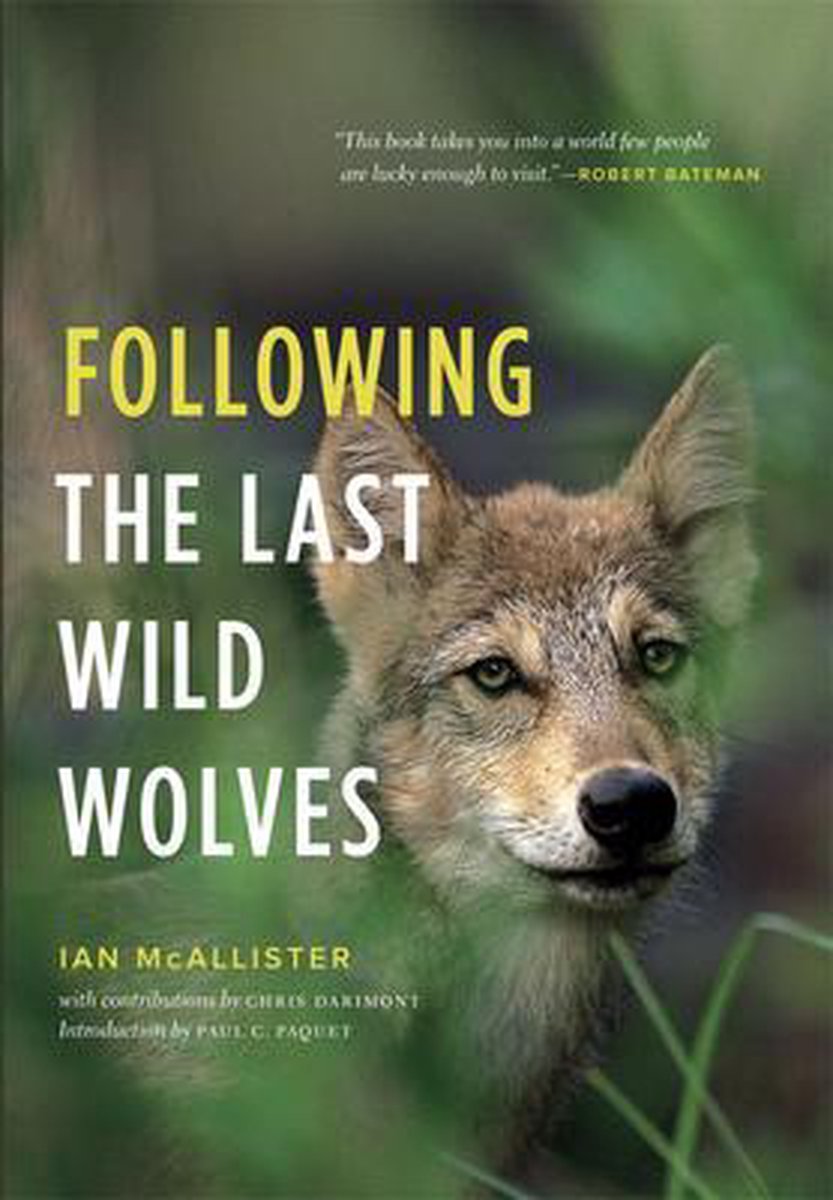It's been a while since I reviewed a proper wolf non-fiction, so here we go. I've already taken a look at another book on the same wolf subspecies which was co-authored by McAllister as well!
In the Great Bear Rainforest, British Columbia, lives a unique subspecies of gray wolves: the coastal "sea" wolves. This species is distinguished by the huge amount of prey they get from the water (salmon, mollusks, etc.) rather than the common ungulate. McAllister gives us a look at some of the packs he studied throughout the years and how the subspecies as a whole is doing.
This was a rather short book. Short but sweet as they say. I did enjoy the contents, though. It just felt like it was over a bit fast.
I do like how McAllister paints a different picture of each pack we follow, such as the Fish Trap Pack and the Village Pack. However, I feel like we don't fully get to know some of the individuals he portrays in this book because of how quick the book was over. I'd have loved to learn more about White Cheeks, Ernest or Three-legs, but what we learn about them feels really brief when the book does create the impression that McAllister wants us to truly get to know these wolves.
I also found it interesting how much of a stance McAllister takes against trapping and collaring wolves. Most researchers whose materials I've read have (for the most part) been supportive of doing this for research (or, alternatively, tranquilize darting and collaring), however McAllister very firmly takes a stance against it and I honestly can see where he's coming from. I'm not sure if I agree with him completely, but I do see his stance on things. Just imagine you are a wolf living your normal life, then suddenly your leg gets caught in a trap, they semi-tranquilize you and do all kinds of tests on you before putting a large block around your neck that you'll likely wear for the rest of your life. And then just having to go back to your life before all that while the animal in question may have some kind of trauma of the whole ordeal.
The information we learn about the subspecies is really interesting, and we really do see how they're distinguished from the other kinds of gray wolf. However, I did have an issue with some of the information portrayed as fact in this book. For one, it says that grizzly bears have retractable claws. They do not. And there's the times the alpha-theory regarding wolves is used incorrectly.
I know I've gone on and on in the past about how it can be applied correctly and how not, and unfortunately this falls into the latter. There is nothing wrong with using the old term ("alpha") to refer to the breeding male and female of a pack. However, when terms like "beta" and "omega" start to be thrown around, you can pick up pretty soon that the writer is using an outdated version of the term. Granted, this book is a bit on the older side, being from about 2007, but the alpha-omega theory was debunked in 1999, so it is a bit late to be using these terms to describe certain wolves in a wild pack.
However, outside of this it was a good read, albeit short! It also comes with a few pages of beautiful photos. Not quite sure if I'd recommend it to people who know very little about wolves and thus might not pick up on the alpha-omega theory being inaccurate, but if you know your stuff I think you can distinguish what's up-to-date and what isn't!
Rating: 4/5

No comments:
Post a Comment